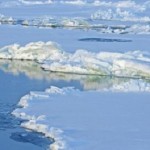Arctic Region Records Second Worst Ice Melt
This summer, the ice in the Arctic Sea has melted to its second lowest level since 50 years ago when record keeping began, reported by a scientist. Global warming has indeed worsened, the scientist added. James Overland, oceanographer at the National Oceanic and Atmospheric Administration of the United States, said the news is never a random event. It is indeed visible that global warming has made its presence felt with the climate change in the Arctic Region.
The National Snow and Ice Data Center took the new measurements. The amount of ice in the Arctic Region now only covers 4.33 million sq. km or 1.67 million sq. miles. Scientists are using satellites and other high-tech gadgets to monitor the melting of ice in the region. Sea ice in the Arctic Region melts every summer and then freezes again during fall season. But the situation today is different and has indeed altered the Arctic Region.
The level this year is 36% below the minimum average of 6.71 million sq. km or 2.59 million sq. miles. The Arctic ice that had shrunk since 1980 approximately equals the size of Lower 48 U.S., covering the western area of the mighty Mississippi River. The monitoring team from the University of Bremen in Germany has also affirmed through its advanced satellite sensors that ice levels in the region has indeed shrunk the lowest since 2007.
